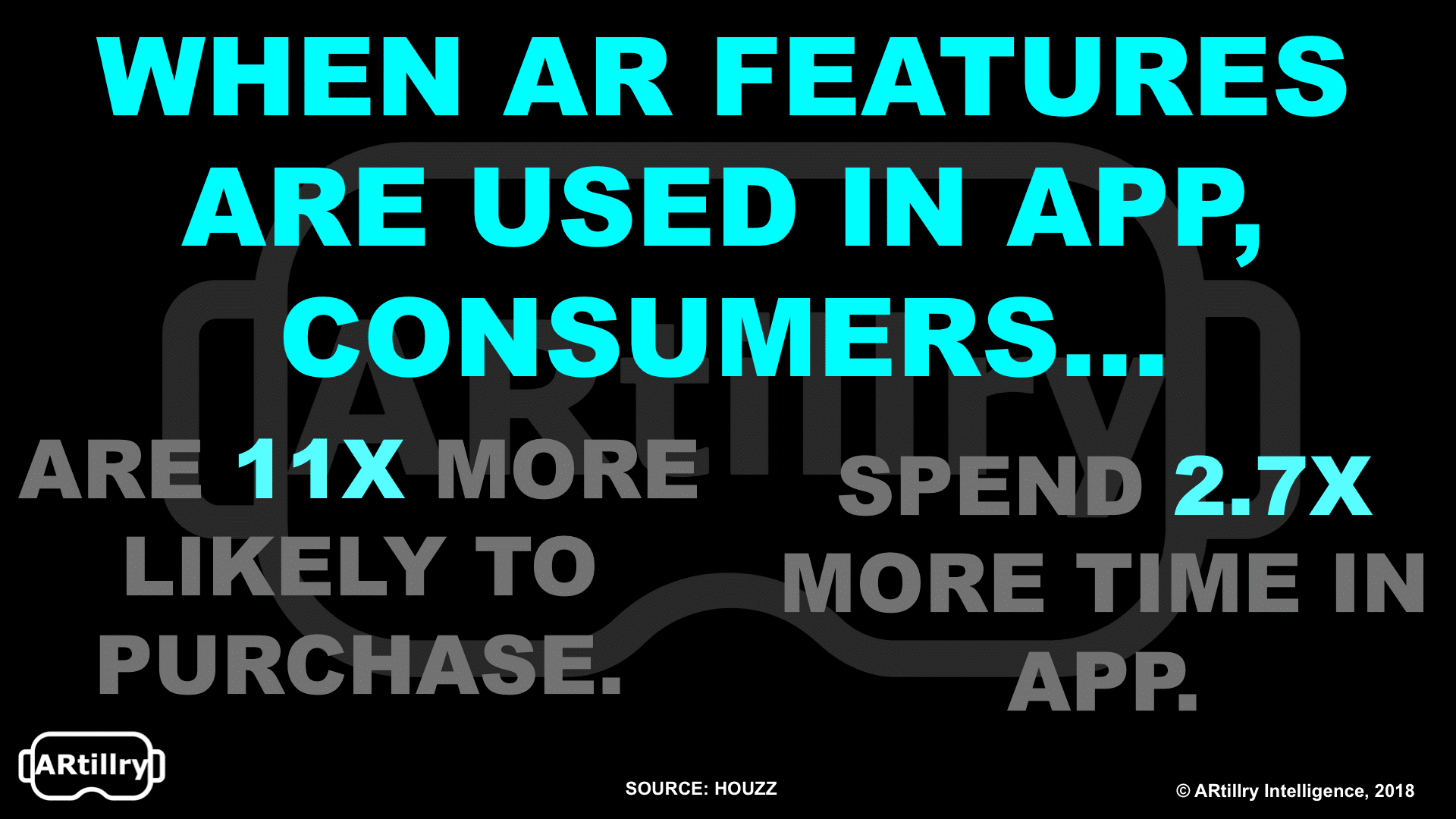
In these early days of mobile AR, developers are still feeling around for strategies that meet user behavior and demand. UX strategies that are aligned and native to AR are the name of the game. So user analytics are gold.
The latest nugget comes from Houzz, which reports that users who engaged its AR features are 11x more likely to purchase and spent 2.7x more time in the app. Like we recently examined for BMW’s iVisualizer app, this brings AR from novelty to actionable and trackable commerce.
This also aligns well with behavior and data we’re tracking elsewhere. As we recently discussed with roOomy, purchase intent for furniture is greater when someone is in home-shopping mode and use the AR feature. This makes it a way for companies to deepen relationships with users.

Like Ikea, wayfair and a few others, Houzz’s app lets users visualize furniture in home. It has a library of 500,000 pieces that can be seen in AR. It’s also notable that, like Amazon and others we’ve examined, it’s incubating this feature within it’s main app versus a standalone app.
Furniture and car visualization apps are starting to pull ahead as one of mobile AR’s early killer apps. This has a lot to do with the points of value that they offer: true utility (not just AR novelty), stickiness, and it’s AR-native. In other words, it’s “AR-only” in that it can’t be done without AR.
For anyone building mobile AR apps, these are a few marks to hit. And that list will continue to grow and evolve. Stay tuned for our February Intelligence Briefing, publishing later this week, which takes a deeper dive on app strategies and business models.
For a deeper dive on AR & VR insights, see ARtillry’s new intelligence subscription, and sign up for the free ARtillry Weekly newsletter.
Disclosure: ARtillry has no financial stake in the companies mentioned in this post, nor received payment for its production. Disclosure and ethics policy can be seen here.
